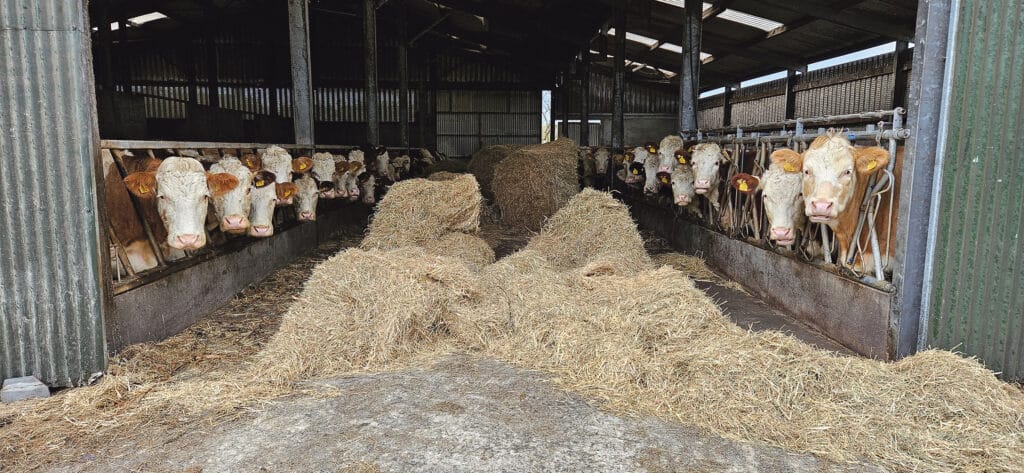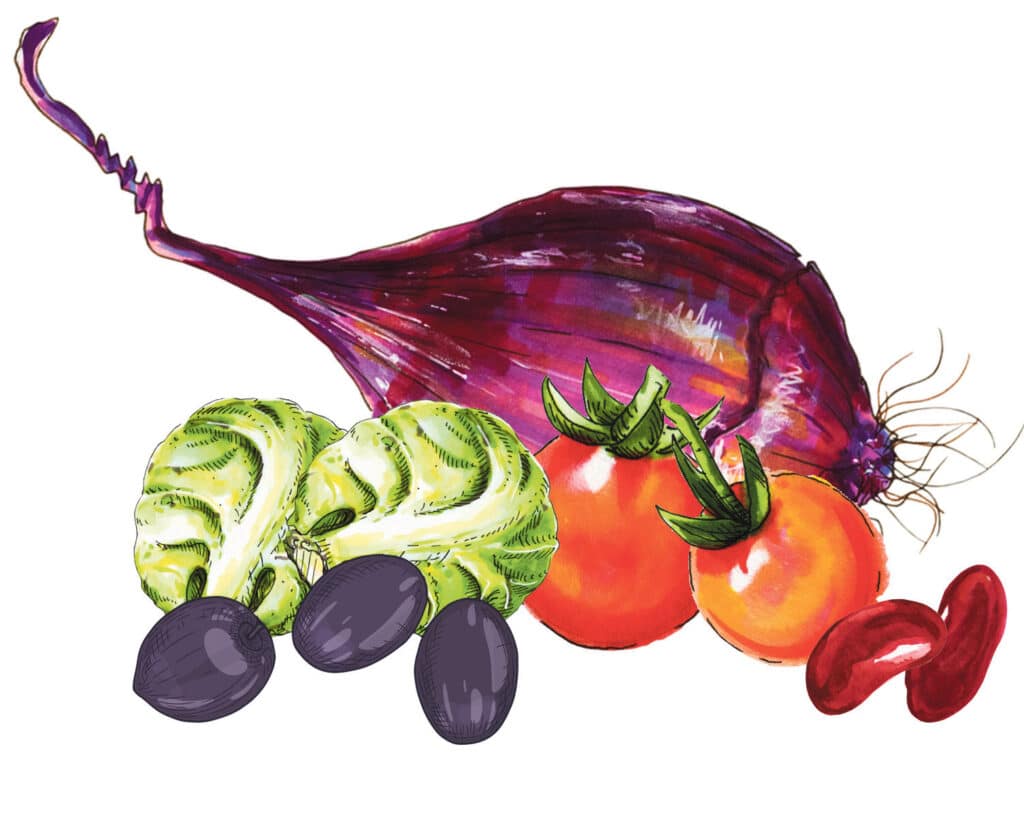
From a farming perspective, I’m not sorry to see the back of 2023. It was a washout and a favourable spring is sorely needed on many farms. It might seem like I’m overdoing the weather thing but the rain did feel relentless. That didn’t help farmer mood, as commodity prices, especially dairy, collapsed from their record highs in 2022 and policy changes, especially around the nitrates derogation seemed to emerge every quarter. That drip-drip introduction of changes meant farmers barely had time to digest what each policy change meant for their farm before the next one was announced.
As challenging as the weather was for livestock producers, those growing crops struggled to catch a break from bad weather at both planting and harvesting. It eventually resulted in the government stepping in and bringing in an unharvested crop payment to try and help farmers who were unable to harvest grain.
It’s scant consolation but going through those issues shows the resilience farmers have and have always displayed. It’s the nature of the business where tomorrow is almost more important than today.
The fallout from last year’s weather continues on many West Cork farms. The ground is saturated and trying to get at field work will require a decent dry spell just to make it navigable and get field work underway. Calving has begun on a share of farms in the region and, as February comes into view, that will ratchet up significantly.
Weather
Weather is one of the main topics of conversation with farmers and everyone’s idea of a drop of rain is different. With that in mind, I prefer to look at Met Eireann’s West Cork weather station on Sherkin island to give a solid indicator of how things have been. The average rainfall for the year was 1,377mm, which is 189mm higher than the Long-Term Average (LTA). This increase in precipitation made farming challenging right across the sectors within the West Cork region. The summer felt wetter than usual and so it proved. From July to October, 588mm fell, putting it almost 202mm above the LTA. Looking back, I remember how happy we seemed when weather came good in February. We weren’t to know it then but it proved to be too good.
The LTA rainfall figures recorded there from 1981 to 2010 for February is 101.4mm. This year it stood at 29.4mm. Only two months in the last four years, June 21 and August 22, were drier than February 2023. March and April were too wet, May and early June too dry and there were even concerns we were heading for a drought early on. Saying all that, maybe it’s a good thing we can’t control the weather.
Politics and farming
I’d love for 2024 to be a boring year when it comes to weather and a settled spell of policy would be welcomed by farmers. There’s another group who I’m sure would love that as well, at least for the first five months of 2024. Politicians.
Local and European elections are flagged for June and there’s also the likelihood of a general election within the next 12 months too. The mood music among farmers isn’t too good after 2023 when it comes to politics and this could be an election where party loyalty will be tested. This will especially apply to farmers affected by the introduction of a new organic nitrate limit that came in on at the start of the year.
Traditionally farmers have been a relatively powerful voting block, however it could be argued that this was in a slightly different Ireland: One where farming had a more visible presence across society and when the Irish farmers voted either Fianna Fail or Fine Gael. Farmers took advantage of that and were generally able to play one against the other depending on which party held the seats of government. The nitrates derogation issue made many realise that this is no longer possible and I attended a meeting in Cork in late November where this realisation was articulated by many farmers who felt let down. They had put in a huge lobbying effort, were made promises that turned out to be empty and now they were left to pick up the financial pieces. Nitrates may have largely had a direct impact on dairy farmers but there is a lot of unhappiness with the Department of Agriculture across the sectors. Where this is really evident was in the delay in CAP payments, some of which may not be paid until well into February.
I remember writing in these pages in the early months of last year about the new flagship environmental scheme ACRES (Agri-Climate Rural Environmental Scheme) and how a new €1.5 billion flagship agri-environment will deliver for farmers and the environment. There was a target of 50,000 participants to be split in two tranches with 30,000 in the first intake and 20,000 in the second. Roughly 46,000 farmers applied initially and a decision was made to accept them all. In fairness to the department, it was a catch-22 situation. Turning away 16,000 farmers from an environmental scheme wouldn’t be a good look. The challenge was, would the IT system already dealing with a new raft of CAP measures be able to cope. We’ve seen since that the pressure proved too much and, as a result, payments remain unpaid to 18,000 farmers. On top of that, 9,000 farmers applied for the second tranche but it appears the door to accept everyone has been firmly closed, so a ranking system will come into play, as the number of farmers who can get into it appears to be capped at 50,000.
The farmer vote can’t be taken for granted anymore but the numbers put pressure on the clout farmers have too. In 2023, 128,712 farmers applied online for the new Basic Income Support for Sustainable (BISS). That’s similar to the population of a five seat Dáil Éireann constituency. Adding family votes and those of people involved in the agri-business sphere in the mix and that farmer voting block expands. But dig a little deeper into voter numbers. The Green party is held up as the government bogey man on farming and rural issues but in the 2020 general election it received 155,695 first preference votes. How, or if, that changes in the next election will be interesting.
As the new year gets underway, German farmers are protesting, following major protests by Dutch and Belgian farmers in 2022. Those saw the emergence of a farmer’s party in the Netherlands, which performed well in senate elections, but didn’t have the same impact when it came to the Dutch general election in November. While I wouldn’t envisage it to hit the same levels, it wouldn’t be beyond the realms of possibility that similar protests take place here. That said, both the IFA and ICMSA have new presidents taking over in 2024, and Francie Gorman and Denis Drennan are likely to want to hit the ground running in terms of making an impact. Given the various issues that continued throughout last year, there’s a range of issues they could run with, if they do decide to protest. Only time will tell if they do.
The home farm
There were days this winter when I didn’t know where to look in the yard. Even with a cap and hood on, I had my head down trying to avoid the rain driven into my face by gales. That was all well and good until I reached the slatted areas and I could see the slurry levels rising in the tanks. You’d wonder if it’s better to walk with your head and eyes up but then you see where the silage is or is meant to be. Cattle have been housed longer than usual on many farms because of the bad autumn so it’s a case of slurry tanks filling and silage stocks emptying causing a bigger issue than usual.
Thankfully things seem to be under control with both slurry and fodder on my own farm, but it’s a balancing act. I try to be negative when it comes to planning around slurry storage and silage, so aim to have plenty of both. That makes things more comfortable when factors outside your control work against you.
The weekly diet for the cows here consists of three days hay and four days silage. Most are in good condition so don’t need the better-quality silage. Those looking a little thinner will receive a dose for rumen fluke. My vets advised me to try selective dosing for parasites a few years ago and it’s been a saver when it comes to labour among other things. I give the cows a few weeks in the same conditions and diet and you’ll see some thrive and others lag behind a little. Invariably there’s something holding these back so rather than giving a blanket anti-parasite dose to everything, only those who visibly look like they need it, receive one.
My reason for adding hay is to stretch silage stocks and it also makes more sense for me to hold that for after calving just in case we get a difficult spring. The in-calf heifers are getting hay too but only once a fortnight. They need a better-quality feed, as they are still growing as well. The daily yard routine is well versed at this stage so eyes will turn towards to fields, and getting fences sorted ahead of the grazing season is the next job. That, and putting in another few hundred metres of hedging, as part of the ACRES environmental scheme.



